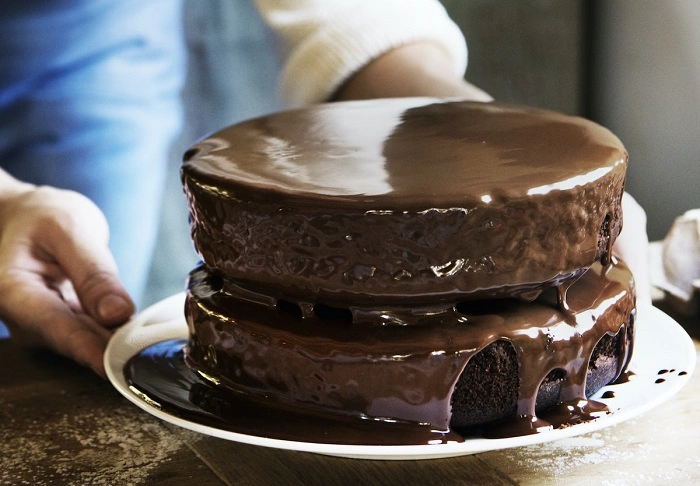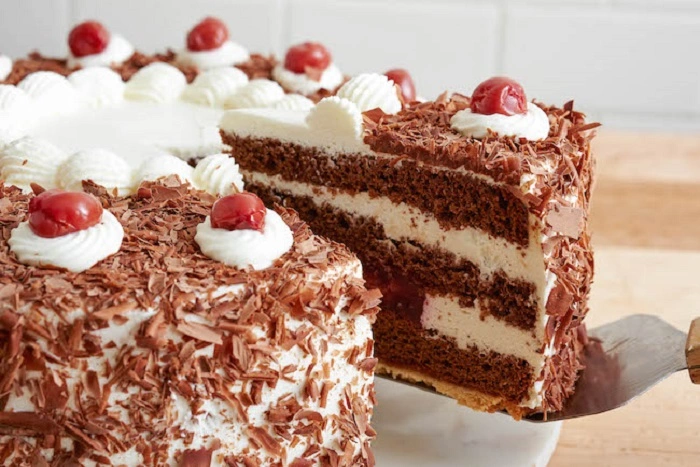Baking a cake is a rewarding experience, but the wait to let it cool before decorating or cutting can sometimes feel like an eternity. Understanding how long it takes for a cake to cool properly is essential for achieving the best results. Whether you’re preparing a simple sponge cake or a more complex multi-layered creation, cooling time is crucial for both texture and taste. In this article, we’ll explore the factors that affect how long it takes a cake to cool, tips to speed up the process, and what to do during this stage.
Table of Contents
The Science Behind Cake Cooling
Baking a cake involves the perfect combination of heat, air, and time. When you remove the cake from the oven, the heat stored within the cake needs to dissipate. As the temperature drops, the cake sets into the final texture we enjoy. If you attempt to frost or cut the cake before it has cooled sufficiently, it can lead to undesirable results such as melting frosting, crumbling, or uneven slices.
Why Cooling Matters
Cooling is not just about temperature; it plays a crucial role in setting the structure of the cake. The batter consists of various components that need time to firm up. Cooling allows for this transition, preventing the cake from becoming soggy or overly dense. If you cool the cake too quickly or at an improper temperature, the texture may be compromised.
Factors Affecting Cake Cooling Time

While the time required for a cake to cool may vary depending on the size and type of cake, several factors influence how long this process takes.
Cake Size and Thickness
The larger and thicker your cake, the longer it will take to cool. A single-layer cake cools faster than a multi-layer cake because there’s less mass to cool down. A thick, dense cake like a fruitcake can take significantly longer to cool compared to a lighter sponge cake or chiffon cake. If you’re in a rush, consider slicing the cake into smaller portions to accelerate the cooling process.
Cake Type
Different types of cakes cool at different rates. For example, moist cakes like butter cakes or those with a lot of liquid content tend to retain heat longer than dry cakes like pound cakes or angel food cakes. These cakes might need more time to cool evenly.
Oven Temperature and Cake Positioning
Oven temperature and the cake’s position in the oven can influence its cooling time. If your cake was baked at a higher temperature, it may retain heat for a longer period. Also, if the cake was placed too close to the top or bottom of the oven, it could be more prone to uneven cooling.
Ambient Room Temperature
Room temperature plays a significant role in how quickly a cake cools. A cake cooling in a warm, humid room will take longer to cool than one in a cooler, dry environment. In general, cakes should be cooled at room temperature, as placing them in the fridge or freezer too early can result in a tough texture or condensation.
How Long Should You Wait for a Cake to Cool?
On average, it can take anywhere from 1 to 2 hours for a cake to cool down sufficiently at room temperature. However, this time can vary based on the factors mentioned earlier.
Cooling Time for Different Cakes
- Small, Thin Cakes: If you’re making cupcakes or small, thin layers, they may only need 30 to 45 minutes to cool completely.
- Medium-Sized Cakes: For medium-sized round or square cakes, expect a cooling time of 1 to 1.5 hours.
- Large Cakes: For a large, thick cake or bundt cakes, you may need to wait up to 2 hours for the cake to cool fully before proceeding.
Speeding Up the Cooling Process
If you need to cool your cake faster, there are a few tips and tricks that can help. However, be careful not to rush the process too much, as improper cooling may negatively affect the texture.
Use a Cooling Rack
A cooling rack allows air to circulate around the cake, speeding up the cooling process. This is especially effective for larger cakes, as the cake cools more evenly when air can flow beneath it. Simply remove the cake from the pan and place it on the rack.
Slice the Cake Into Smaller Portions
If you’re pressed for time, consider slicing the cake into smaller pieces or layers. This increases the surface area, helping heat to escape more rapidly. Be sure to handle the cake gently to avoid any damage.
Place the Cake in a Cooler Area
If your kitchen tends to be warm, try moving the cake to a cooler room or an air-conditioned space. This can help lower the ambient temperature and cool the cake faster. Just be sure the cake is in a safe place away from drafts or moisture that could ruin the texture.
Use a Fan or Cooling System
Using a fan to circulate air around the cake can significantly speed up the cooling process. Avoid using direct heat sources such as hairdryers or ovens, as these could dry out or burn your cake.
What Happens If You Cool the Cake Too Quickly?
While it may seem tempting to speed up the cooling process by placing the cake in the fridge or freezer, this can lead to several issues:
- Condensation: Rapid cooling can cause moisture to build up on the surface of the cake, which can affect the texture and make frosting difficult.
- Dense Texture: Cooling a cake too quickly can result in a denser, tougher texture, as it doesn’t have time to set properly.
- Melting Frosting: If you attempt to frost the cake before it’s cooled adequately, the frosting can melt and slide off, making your cake look unappealing.
For the best results, it’s always recommended to let the cake cool naturally at room temperature.
Decorating and Storing Your Cake


Once your cake has cooled completely, it’s time to decorate and store it. Here are some additional tips to ensure your cake remains delicious and fresh.
How to Frost a Cake
When frosting a cake, make sure it’s at room temperature, as a cold cake can cause the frosting to harden and not spread smoothly. For best results, use a crumb coat— a thin layer of frosting that locks in any loose crumbs before applying a final, thick layer of frosting.
Storing Your Cake
If you’re not serving the cake immediately, it’s important to store it properly to maintain freshness. Wrap the cake in plastic wrap or place it in an airtight container to prevent it from drying out. Cakes can typically be stored at room temperature for up to 2 days, but if they contain dairy-based fillings or frosting, they should be refrigerated.
FAQs
How long does it take for a cake to cool completely?
It generally takes 1 to 2 hours for a cake to cool completely at room temperature, depending on the size and type of cake.
Can I put a hot cake in the fridge to cool faster?
It’s not recommended to put a hot cake in the fridge as it can lead to condensation and a soggy cake. It’s best to let it cool at room temperature.
How can I speed up the cooling process for a large cake?
Use a cooling rack to allow air to circulate, or slice the cake into smaller portions to speed up cooling time.
What happens if I frost the cake before it cools?
Frosting a cake before it cools can result in melted frosting, an uneven texture, and a mess. Always allow the cake to cool completely.
Is it necessary to let the cake cool before cutting?
Yes, letting the cake cool before cutting ensures that it holds its shape, making it easier to slice and present.
Cooling a cake is an essential step in the baking process, and patience is key to ensuring the best texture and flavor. Whether you’re preparing a quick treat or a special dessert, understanding how long it takes for a cake to cool will help you achieve the perfect result every time.

